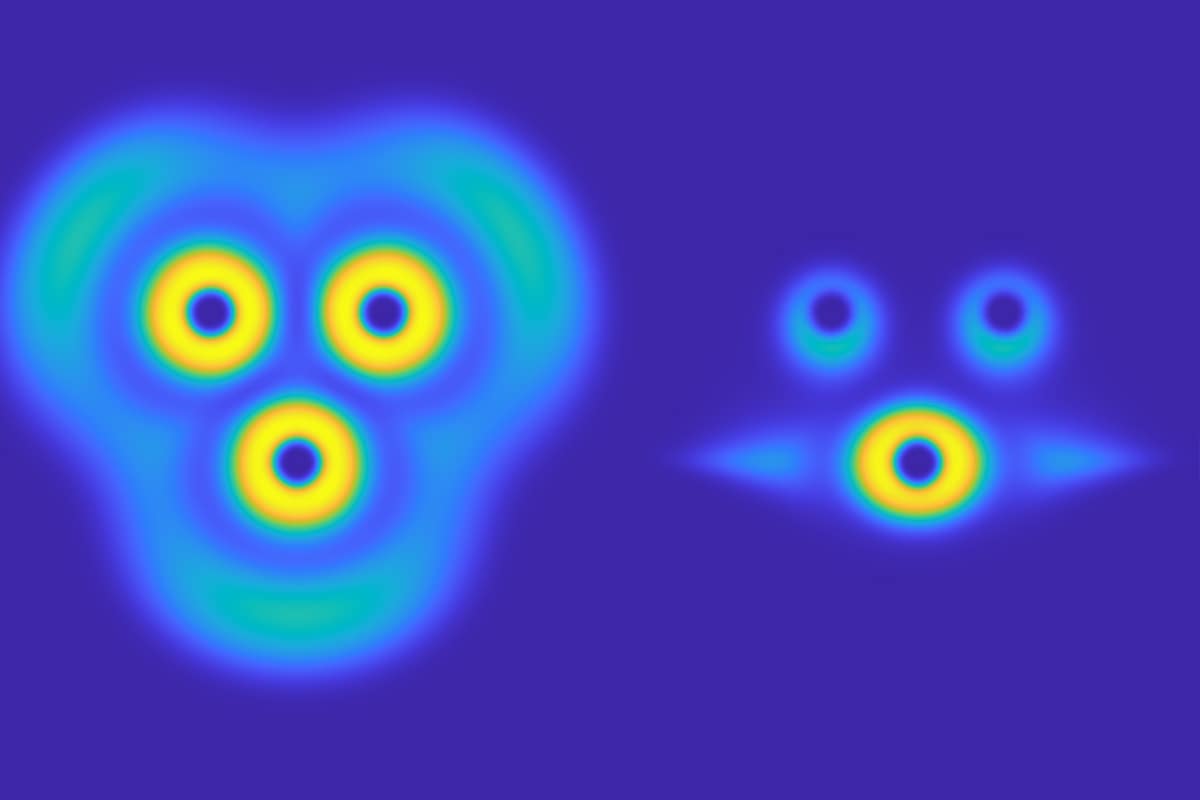
Researchers have published a new study in Physical Review Letters addressing limitations in the electron localization function (ELF), widely used to describe chemical bonds and atomic shells in materials. Since the traditional ELF cannot be applied to particularly complex magnetized quantum states, the team proposes a long-sought extended version of the ELF. This development is expected to enhance material modeling, with implications for both theoretical and practical applications in nanomagnetism.
Results stem from a collaborative study that involved Jacques K. Desmarais and Alessandro Erba form the University of Turin (Italy), Giovanni Vignale from the National University of Singapore (Singapore), Kamel Bencheikh from the University-Ferhat Abbas (Algeria), and Stefano Pittalis from Cnr Nano in Modena (Italy).
The ELF has become one of the most popular means to visualize bonds. It indicates where the electrons localize to form bonds: for example, looking at the images produced by plotting the ELF, scientists can understand the underlying organization of the electrons in the material. The gained understanding can be exploited to design improved materials or optimize states thereof. In their work, Pittalis and colleagues, have extended the ELF in such a way to make it work also for complex magnetized materials, such as those that are relevant in ongoing developments of spintronics.
Magnetized states of matter primarily result from the way the charges and spins of the electrons move in the material. The purpose of the new ELF is to provide a consistent and robust tool for visualizing and thus modeling bonds, not only for regular states but also for non-collinearly magnetized states of matter. “In these states, the direction of the magnetization varies from point to point in the material. Moreover, since it cannot be related to any of underlying spins specifically, the assumptions used in setting up the regular ELF do not apply”, Pittalis explains. This brought up the longstanding question of whether the ELF could be extended so that it works also for non-collinearly magnetized states – a question that is now answered positively by the researchers’ work.
The work has required to deal with advanced quantum mechanics of many-body systems, analytical derivations as well as software implementation in the Crystal code. “Our extension of the ELF takes into account both the orbital and spin properties of the electrons on equal footing. In working it out, we were inspired by the principles and methods of the Yang-Mills theory – a quantum extension of the classical electromagnetism, which is useful to describe complex fundamental interactions of the constituents of matter.”, says Pittalis. “Remarkably, we find that the extended ELF not only enables the visualization of the chemical bonds for complex magnetic systems but also improves the description of simpler magnetized systems”.
Magnetic materials have wide-ranging technological applications, with the field of spintronics offering a novel approach by using electron spin, rather than charge, to process information more efficiently and with lower energy consumption. Simple and effective modeling tools – such the ELF – can help design materials or states of matter, to achieve technological goals optimally. Furthermore, the ELF is also an important input to other modern methods to investigate and simulate the electronic structure of materials. The extended ELF developed in this work can find exploitation along multiple advanced directions.
Reference article:
Jacques K. Desmarais, Giovanni Vignale, Kamel Bencheikh, Alessandro Erba, and Stefano Pittalis, Electron Localization Function for Noncollinear Spins, Phys. Rev. Lett. 133, 136401 – DOI: https://doi.org/10.1103/PhysRevLett.133.136401
| Cookie | Duration | Description |
|---|---|---|
| cookielawinfo-checkbox-analytics | 11 months | This cookie is set by GDPR Cookie Consent plugin. The cookie is used to store the user consent for the cookies in the category "Analytics". |
| cookielawinfo-checkbox-functional | 11 months | The cookie is set by GDPR cookie consent to record the user consent for the cookies in the category "Functional". |
| cookielawinfo-checkbox-necessary | 11 months | This cookie is set by GDPR Cookie Consent plugin. The cookies is used to store the user consent for the cookies in the category "Necessary". |
| cookielawinfo-checkbox-others | 11 months | This cookie is set by GDPR Cookie Consent plugin. The cookie is used to store the user consent for the cookies in the category "Other. |
| cookielawinfo-checkbox-performance | 11 months | This cookie is set by GDPR Cookie Consent plugin. The cookie is used to store the user consent for the cookies in the category "Performance". |
| viewed_cookie_policy | 11 months | The cookie is set by the GDPR Cookie Consent plugin and is used to store whether or not user has consented to the use of cookies. It does not store any personal data. |